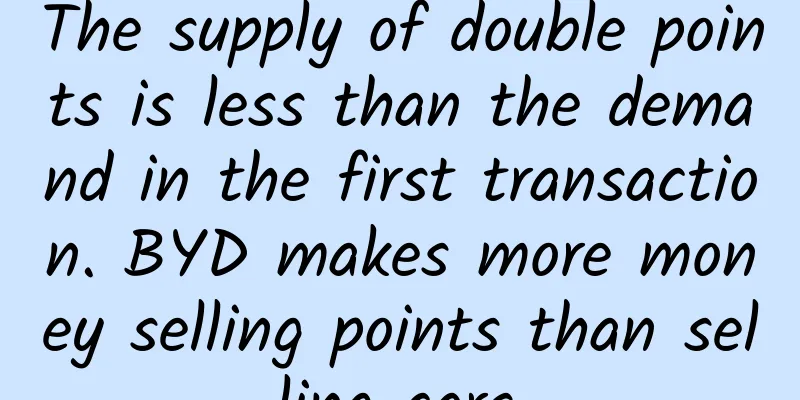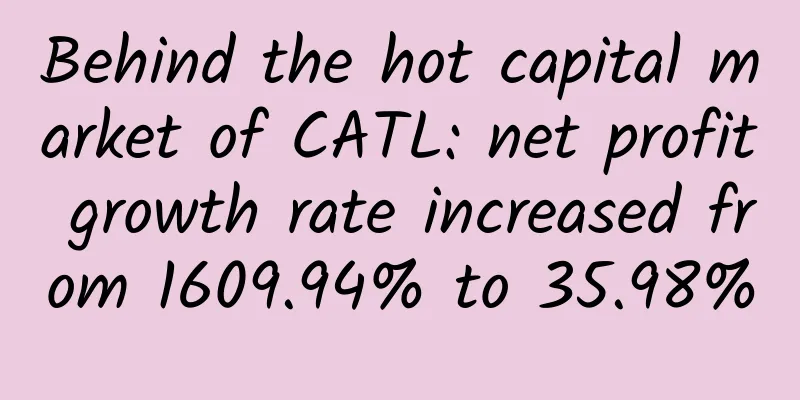The supply of double points is less than the demand in the first transaction. BYD makes more money selling points than selling cars.

|
As soon as the corporate dual-points calculation table (2017 Passenger Car Corporate Average Fuel Consumption and New Energy Vehicle Points) was released on July 2, everyone started to watch and count their fingers. After all, this time it is not just a simple announcement of an assessment score, but the "transaction" and "punishment" measures will be formally initiated based on the double points scores. After careful calculations, many media outlets found that the positive new energy points of the car companies being calculated were greater than the negative points, which means that there was a surplus of points in the market, and that the negative fuel consumption points of many car companies could be resolved internally. Therefore, they concluded that there was not much demand for this first double-point transaction. What is the truth? Let’s take a look at the scale of the first point transaction since the implementation of the double point policy. The big stick falls, and the assessment begins According to the 2017 accounting results announced last week and the 2016 double-point accounting results announced in March this year: Among the 124 passenger car companies in 2016, a total of 44 companies failed to meet the fuel consumption points standard, among which Great Wall Motor, Changan Automobile, SAIC-GM (Shenyang), Anhui Lieping Automobile, and Sichuan FAW Toyota ranked in the top five with negative fuel consumption points. In 2017, among the 130 domestic passenger car companies, 74 companies met the fuel consumption points standards, while 56 companies did not meet the standards. These companies include Changan Ford, Great Wall Motors, Dongfeng Limited, etc. According to the requirements of the dual-credit trading platform, enterprises with negative average fuel consumption points in 2016 and 2017 shall submit a negative average fuel consumption points compensation report to the Ministry of Industry and Information Technology through the trading platform before August 31, and complete the negative points compensation to zero before September 30. (The "dual-credit" trading platform was officially launched on June 28.) That is to say, in the three months from the announcement of the points last week to the end of September, companies that had negative fuel consumption points in 2016 and 2017 must clear the negative points in a manner permitted by policy. Otherwise, companies whose negative fuel consumption points cannot be offset to zero will face the penalty of having products that do not meet fuel consumption standards not included in the vehicle model announcement, which means sales will be suspended. How to compensate for negative points? According to the points system, there are four ways to compensate for negative points. First, use the positive points of average fuel consumption carried forward by the enterprise. "Carry forward" means that the positive points of enterprise fuel consumption from 2013 to 2015 can be carried forward to 2016 at a certain ratio to offset the negative points. Second, use the positive points of average fuel consumption transferred by the enterprise. "Transfer" means to receive positive fuel points from related enterprises (such as enterprises within a group, or enterprises with joint ventures) to offset their own negative points. Third, use the positive points generated by the company for new energy vehicles. This is relatively easy to understand. However, some companies with many negative points usually do not have many positive points for new energy vehicles, such as Great Wall. Fourth, buy positive points from other companies’ new energy vehicles. Car companies that have negative points will consider buying points from other companies’ new energy vehicles when the above three methods are not enough to offset the negative points. This is the real “business” in the dual-points trading market. Trading market "supply is less than demand" Some media judged that the dual-credit trading market was "oversupplied" because they only looked at the figures for 2017. However, if we add the figures for 2016, from the overall "book", the first dual-credit trading in my country was actually facing a situation of "supply less than demand". Of course, there is a prerequisite for achieving a complete transaction, which is how many companies with negative fuel consumption points in 2016-2017 really need to purchase positive new energy points? As mentioned earlier, there are many ways to clear negative fuel consumption points. Only when carry-over or internal transfer is no longer possible will you buy points. In layman's terms, it means that you have used up your previous savings and can no longer borrow from friends, so you will spend money to buy. So how many of these more than three million negative points (2016+2017) can be absorbed internally through carry-over and transfer? Let’s do a rough calculation with an example. The two companies with the highest voice in the dual-points transaction are Changan Ford and Great Wall Motors. The reason is that Changan Ford had the most negative points in the 2017 accounting table, close to negative 300,000 points. If the points in 2016 and 2017 were added together, Great Wall had the most negative points (close to negative 400,000 points). The negative points of these two companies combined account for a quarter of the negative points of all automakers, making them the "big players" in double-point transactions as predicted. First of all, if the positive fuel consumption points from 2013 to 2015 are carried forward, neither company will get any advantage. Because according to the negative points compensation method, the fuel consumption points from 2013 to 2015 need to be recalculated (as shown above). Changan Ford, as a former major fuel consumption point earner, can't carry forward any points. Great Wall can only carry forward tens of thousands of points from 2013, but after layers of conversion, only 10,000 or 20,000 points are left. If carry-over is not possible, what about internal transfer? Great Wall has very few affiliated companies, and currently only one is Hebei Yujie. Hebei Yujie's fuel consumption points are only 30,000 points, which is a drop in the bucket for Great Wall. Including Great Wall's own new energy points (0.95), Great Wall still needs to purchase more than 300,000 new energy points. Let’s look at Changan Ford. Unlike Great Wall, Changan Ford is backed by Changan Group and should be able to clear its points through sufficient internal transfers. This is indeed the case. The largest positive points holder within Changan Group is Chongqing Changan Automobile Co., Ltd., with positive fuel consumption points exceeding 500,000 points. This is enough to offset the negative points of Changan Ford. "Negative fuel credits within large groups are usually traded within the group," such as Changan Ford, while independent companies like Great Wall need to purchase credits, explained Cui Dongshu, secretary general of the China Passenger Car Association. Great Wall may become the largest buyer. Does BYD make more money selling points than selling cars? In short, double-point trading is inevitable. Some car companies can "lean on the big tree to enjoy the shade", but some car companies cannot escape it. Industry experts have previously evaluated the transaction price of double points, ranging from 1,000 yuan/point to 10,000 yuan/point. Even if calculated at the lowest price of 1,000 yuan per point, theoretically, my country's first dual-points transaction will not be less than hundreds of millions in transaction volume (Great Wall alone may contribute 300 million). Among the big players in new energy credits, BYD, Geely and BAIC New Energy are likely to become the biggest beneficiaries of this transaction. Especially for BYD, the total new energy credits of BYD Auto Industry Co., Ltd. and BYD Auto Co., Ltd. are 297,000. Adding the 240,000 new energy credits in 2016, BYD has more than 500,000 new energy credits available for dual credit market transactions. How much is 500,000 points worth in market value? At least 500 million. Compare it with the financial report released by BYD in the first quarter: BYD's net profit in the first quarter of this year was 1.02425 billion yuan, a year-on-year decline of 83.09%. The company that is most looking forward to the implementation of the double-points transaction as soon as possible at this moment is definitely BYD. After all, for BYD, selling points is more profitable than selling cars. As a winner of Toutiao's Qingyun Plan and Baijiahao's Bai+ Plan, the 2019 Baidu Digital Author of the Year, the Baijiahao's Most Popular Author in the Technology Field, the 2019 Sogou Technology and Culture Author, and the 2021 Baijiahao Quarterly Influential Creator, he has won many awards, including the 2013 Sohu Best Industry Media Person, the 2015 China New Media Entrepreneurship Competition Beijing Third Place, the 2015 Guangmang Experience Award, the 2015 China New Media Entrepreneurship Competition Finals Third Place, and the 2018 Baidu Dynamic Annual Powerful Celebrity. |
<<: With Huawei and Xiaomi in front and OV and Meizu behind, how long can Liu Zuohu's OnePlus last?
Recommend
SKF sued by Daimler for alleged monopoly
According to foreign media reports, SKF was punis...
Download the complete set of videos for first-level construction engineers, Baidu cloud of first-level construction engineer videos in 2020!
[Abstract] Download the complete set of videos on...
Following orders and serving others...When will robots truly replace human labor?
In today's era, technology is developing rapi...
Insomniacs can't fall asleep, so they keep taking sleeping pills? The love-hate relationship between insomniacs and sleeping pills
Author: Jiang Molin Beijing Hospital of Tradition...
A star has fallen! Remembering Academician Huang Xuhua: He lived in anonymity for 30 years and worked hard for national defense
Today (7th) China Shipbuilding 719 Institute issu...
Be careful, this "taro" is poisonous all over!
Experts in this article: Zhao Aili, PhD candidate...
Which Doraemon gadget is the most powerful? Some of them have actually come true
Review expert: Liu Xiangquan, Director of the Rob...
Advertising effect is not good? This is 80% of the reason!
I often hear advertisers complain that SEM promot...
Website marketing plan, second-hand notebook online marketing promotion plan!
1. Keywords and descriptions on the homepage of t...
Did higher education exist in the Warring States Period? Explore the origin of the Jixia Academy
...
The 15-second Douyin video has been viewed over 1 billion times a day. Let’s see what kind of content people are consuming.
Short videos refer to video content with a playba...
Can't eat anything if you have diabetes? Beware of malnutrition!
Image from: freepik.com According to data from th...
Card-Film and Television Commentary Training Camp 3rd Session, 130 practical lessons, film and television commentary, technical Q&A
Card-Film and Television Commentary Training Camp...
Why not use money to incentivize user contributions
The important role of operations is to establish ...









